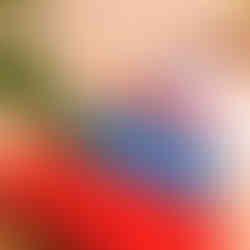More than two plus two: Montessori math beyond memorization
- Breana Smith
- Sep 21, 2023
- 4 min read
Updated: Sep 24, 2023
I have this habit when I just don't want to stay inside all day but have nothing to do. I will run errands and once I've finished, I drive aimlessly through town to areas unknown to me until I find a familiar street to turn onto and bring me back home. Sometimes I would even find myself lost but eventually I'd find my way. Overtime, I unknowingly created a mental road map in my head that helped me more than I could count. Thankfully we have GPS more readily at our fingertips.
But because of this, I started to connect the familiarity of areas I had once visited. I created a completed map.
Have you ever gone to the same place over and over but never the surrounding area? Then one day, you are driving around or visiting nearby and it all starts to make sense. You've been here before and now you have this full mental map of the area.
A growing mental roadmap is how I can best describe Dr. Montessori's concept of the concrete to abstract. In a Montessori school, you will see many different materials and you may not understand what all of them are for. But they all have a purpose that will help cultivate the child's potential.

What does concrete to abstract mean?
When you see language, math, sensorial and even practical life materials, they have a sense of progression. Students start a specific level of materials and as they master each one, they go on to the next with a broader understanding gained from previous works. These are considered concrete to abstract materials. Everything is interconnected. I will be using math as the example, but first let's explore sensorial works.
Sensorial

Children learn the concepts of length, height, width and weight through sensorial materials. They can feel the heaviness of the brown stairs and pink tower, recognize the different lengths in the red rods (which you'll find are similar to the number rods in math) and more. All of these concrete objects help prepare the child to internalize math in a way that they can truly understand why and how a problem is solved through equations (the abstract). So to many, it could look like the child is just stacking blocks, but they are in the process of learning abstract ideas but at a concrete level.
Math
In a traditional school setting, you will see a lot of memorization taught in math class. Children go through school memorizing formulas and how to solve the problem, but they don't learn the why.
I remember my days in school when I learned formulas and concepts and thought I had a complete understanding. But when the test came and nothing seemed to make sense. I wasn't taught how to connect the dots so when the problem became more difficult, I didn't know how to truly solve it, even though it was through the same formula. Other students would come together in frustration as we did our homework, wondering why what we learned in class, didn't seem to connect.
It wasn't that they didn't connect, but more so that we weren't given the concrete knowledge that went in between. We were trying to build a mental map with missing coordinates.
In Montessori, because we have the concrete materials, those little connections and quarter mile turns are filled in and we reach our destination with clarity.
So when we see the brown stairs or the geometric shapes, just know that these are foundations to counting, algebra, geometry and more. Not only does everything build on one another, but the connections are made and the child can see them. This in turn creates problem solvers and creators even outside of math.
Outside of math
I was always an great math student but I owe that a lot to the best teacher, my sister. When I was in the first grade, my sister, who was in fifth grade at the time, taught me everything she'd learn by solving math problems on a whiteboard in my grandmother's basement. Her intention wasn't to teach. Her intention was to show with excitement all that she had learned. I just absorbed it all. Children, are very capable of learning what we may deem higher level, and Montessori believed that in some instances, they learn better from those closer in age.
I love that in Montessori, there is respect for the different levels of students. In my situation, I didn't get the chance to learn more math, even though my teachers saw that I was ahead. Instead they took me out of class to do other activities. I love math and still love playing with numbers and equations but I can't say I truly understand math. I learned from memorization and can't tell you how a problem connects to anything, especially the real world. A lot of us grew up this way. That's why we constantly say, "why do I need to know geometry or calculus? I will never use this." But, I've come to learn, that we do.
Seeing math in action in a Montessori classroom is a beautiful sight. I see younger children gathering nearby to watch the older students put together their math works, absorbing the knowledge for when it's their turn. Solving a math problem or equation goes beyond a sense of pride and accomplishment. The child can use all that they've learned and connected, to problem solve and that expands outside of mathematics.
Maria Montessori says that we are born with a mathematical mind. We learn to look at ideas first as concrete and expand to abstract, coming up with creative and new ways to solve a problem or look at the world. When we understand math, we find that not everything is two plus two. The world is more complex than that.
Suggested Reading:

















Comments